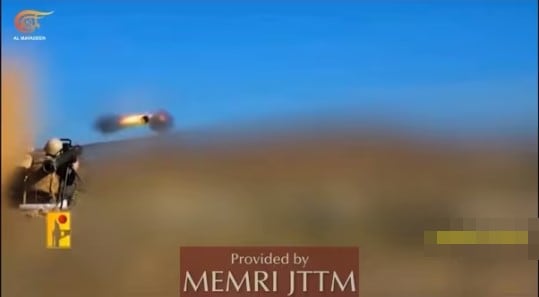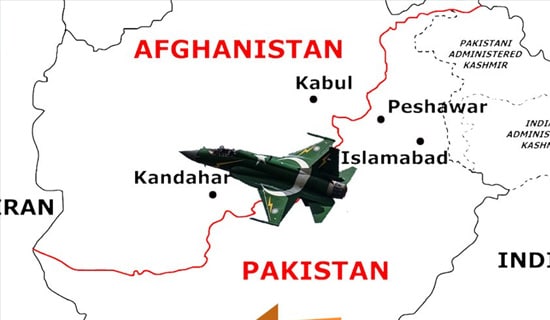The following report is now a complimentary offering from MEMRI's Jihad and Terrorism Threat Monitor (JTTM). For JTTM subscription information, click here.
On February 27, 2024, the pro-Lebanese Hizbullah outlet, Al Mayadeen TV, broadcast a special program about anti-tank weapons in the possession of Hizbullah in Lebanon which, for the first time, revealed that Hizbullah possesses the Iranian-made Almas ("diamond" in the Farsi language) that has a "special guided missile system."[1] The program included an "exclusive" interview with a senior Hizbullah official named Hajj Jihad, who specializes in anti-tank weapons. Hajj Jihad confirmed recent reports in the Israeli media[2] that the Almas is a copy of an advanced IDF anti-tank missile based on several Israeli Spike anti-tank guided missiles which were seized by Hizbullah in 2006. It is noteworthy that in January and February 2024, Hizbullah posted at least three videoclips which depict the capabilities of the Almas, while not revealing details about its operating system.[3]

According to Hajj Jihad, the Almas has advanced capabilities which allow it to be launched at a target even when that target is not in the direct line of sight of the person launching the missile. The person operating the missile can follow its trajectory by means of a camera mounted on its nose cone until it identifies the target, at which point he can direct the missile until it hits the target.[4]
Hajj Jihad also revealed that Hizbullah used the Almas missile for the first time in an attack on "the Metulla outpost," adjacent to the Israel-Lebanon border, in which it destroyed an Israeli Merkava tank. He said that the missile was also used several times subsequently.


Al-Mayadeen's analyst for Lebanese and political affairs, Abbass Fneish, stated in the program that in 2006 the Israeli Air Force attempted to destroy Spike missiles that were left behind in Lebanese territory by IDF soldiers, but several were not damaged and Hizbullah kept that information secret. The Hizbullah operatives who discovered the missiles reportedly informed Imad Mughaniyyah (a top Hizbullah military leader who was killed in a car bomb explosion in Damascus on February 12, 2008), who passed on the information to Hizbullah Secretary-General Hassan Nasrallah. Nasralla is said to have arranged for the missiles to be brought to Iran, where they were used as the basis for the development of the Almas.
[1] February 27, 2024.
[2] Haaretz, February 1, 2024.
[3] Telegram, January 25, 28, 2024; and February 10, 2024.
The full text of this post is available to subscribers.
Please login or register to request subscription information from MEMRI





